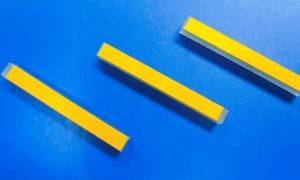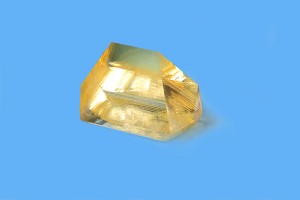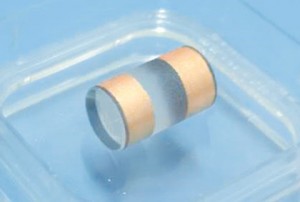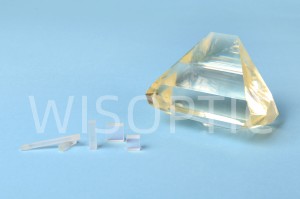-

OPTICAL LENSES
Spherical lenses made of N-BK7, UVFS or CaF2 optical materials, Apherical lenses made of N-BK7, UVFS or S-LAH64 optical materials, Cylindrical and Conical (Axicon) lenses made of N-BK7 and UVFS.
Other specific material, size and anti-reflection (AR) coated lenses are available under custom request. Most of the lenses are available ex-stock for fast off-the-shelf delivery.
Lenses forms plano-convex, plano-concave, biconvex, biconcave, plano-convex cylindrical and plano-concave cylindrical. Focal lengths vary from -5000 to +10000 mm.
For example, the aspheric lens has a better radius of curvature and can maintain a good aberration correction to obtain the required performance. The application of aspheric lenses brings excellent sharpness and higher resolution, and at the same time the miniaturization of the lens design becomes possible. -

BBO Crystal
BBO crystal has two types: α-BBO and β-BBO.
The physical, chemical, thermal and optical properties of α-BBO are similar to those of β-BBO. However, α-BBO has no nonlinear optical property due to its centric symmetry structure while β-BBO has acentric symmetry structure. α-BBO is widely used in high power laser system as devices of Glan prisms, polarizing beam splitters, compensators and so on. β-BBO provides an attractive solution for various nonlinear optical applications such as OPA, OPCPA, OPO etc.
-

PBS (Polarizing Beam Splitter)
Polarizing Beam Splitter (PBS) splits incident unpolarized light into two perpendicular linearly polarized light. Among them, p-polarized light passes through completely, while s-polarized light is reflected at 45 deg which makes the emitting direction of s-light vertical to p-light. The PBS is composed of a pair of high-precision right-angle prisms cemented together, one of which is coated on the wedged surface which determines the beam splitting ratio. All the incident surfaces and emitting surfaces are AR coated.
WISOPTIC offers both plate and cube PBS for a variety of wavelength ranges and power handling requirements. In addition, birefringent crystals, Brewster windows, and waveplates are also offered for higher-laser damage threshold requirements. -

LN POCKELS CELL
WISOPTIC uses the highest optical quality lithium niobate to make LN Pockels cells used in several laser types (including: Nd:YAG, Nd:YALO, Nd:YLF and Er:YLF). -

DKDP POCKELS CELL
Potassium dideuterium phosphate DKDP (KD * P) crystal has low optical loss, high extinction ratio, and excellent electro-optical performance. DKDP Pockels cells are made by using the longitudinal effect of DKDP crystals. The modulation effect is stable and the pulse width is small. It is mainly suitable for low-repetition-frequency, low-power pulsed solid-state lasers (such as cosmetic and medical lasers). -

KTA Crystal
KTA (Potassium Titanyle Arsenate, KTiOAsO4 ) is a nonlinear optical crystal similar to KTP in which atom P is replaced by As. It has good non-linear optical and electro-optical properties, e.g. significantly reduced absorption in band range of 2.0-5.0 µm, broad angular and temperature bandwidth, low dielectric constants. -

RTP POCKELS CELL
RTP (Rubidium Titanyl Phosphate - RbTiOPO4) is a very desirable crystal material for E-O modulators and Q-switches. It has advantages of higher damage threshold (about 1.8 times that of KTP), high resistivity, high repetition rate, no hygroscopic or piezoelectric effect. As biaxial crystals, RTP’s natural birefringence needs to be compensated by use of two crystal rods specially oriented so that beam passes along the X-direction or Y-direction. Matched pairs (equal lengths polished together) are required for effective compensation. -

KTP POCKELS CELL
HGTR (high anti-grey track) KTP crystal developed by hydrothermal method overcomes the common phenomenon of electrochromism of the flux-grown KTP, thus has many advantages such as high electrical resistivity, low insertion loss, low half-wave voltage, high laser damage threshold, and wide transmission band. -

KDP & DKDP Crystal
KDP (KH2PO4 ) and DKDP/KD*P (KD2PO4 ) are among the most widely-used commercial NLO materials. With good UV transmission, high damage threshold, and high birefringence, these material are usually used for doubling, tripling and quadrupling of Nd:YAG laser. -

KTP / GTR-KTP Crystal
KTP (KTiOPO4 ) is one of the most commonly used nonlinear optical materials. For example, it’s regularly used for frequency doubling of Nd:YAG lasers and other Nd-doped lasers, particularly at low or medium-power density. KTP is also widely used as OPO, EOM, optical wave-guide material, and in directional couplers. -

Nd:YVO4 Crystal
Nd:YVO4 (Neodymium-doped Yttrium Vanadate) is one of the best commercially available material for diode-pumped solid-state lasers, especially for lasers with low or middle power density. For example, Nd:YVO4 is a better choice than Nd:YAG for generating low-power beams in hand-held pointers or other compact lasers... -

LBO Crystal
LBO (LiB3O5) is a kind of non-linear optical crystal with good ultraviolet transmittance (210-2300 nm), high laser damage threshold and large effective frequency doubling coefficient (about 3 times of KDP crystal). So LBO is commonly used to produce high power second and third harmonic laser light, especially for ultraviolet lasers.
